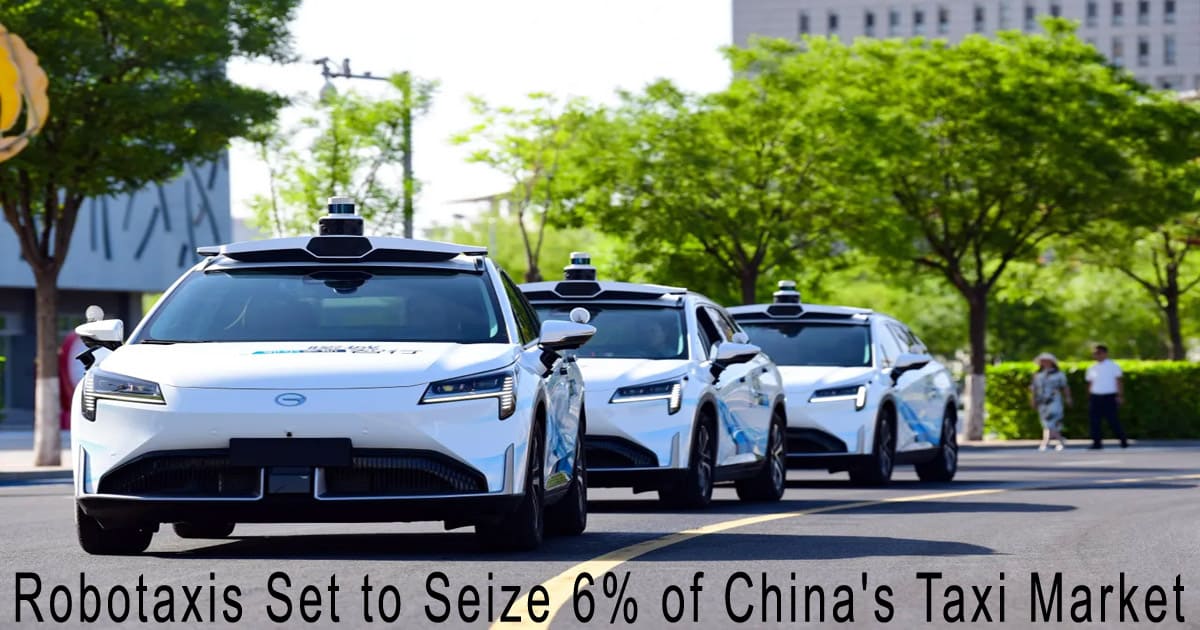Robotaxis Aiming for 6% of China’s Taxi Market—But What Does That Really Mean?
Robotaxis Set to Seize 6% of China’s Taxi Market – According to a recent HSBC report, driverless taxis—better known as robotaxis—are expected to capture 6% of China’s taxi and ride-hailing market in the coming years. Its market value is very potential and could exceed $40 billion USD. But before jumping into the hype or investing big, let’s unpack how realistic this is, who the major players are, and what hurdles still remain. https://wearegntlmen.com
Robotaxis Set to Seize 6% of China’s Taxi Market:
Key Players and Competitive Landscape: It’s Not Just Baidu and Pony.ai
China’s robotaxi ecosystem includes more than five major players, such as:
- Baidu Apollo Go: Already completed over 10 million rides across more than 10 cities, including Wuhan and Chongqing.
- With business licences in several major cities, Pony.ai is planning to expand to Hong Kong.
- WeRide, AutoX, and SAIC: Each brings a unique approach—whether it’s global partnerships, full-stack tech development, or local manufacturing.
In Wuhan alone, Baidu claims its Apollo Go service now covers up to 35% of the city’s road network—getting close to conventional taxi coverage.
Tech & Infrastructure: Level 4 Autonomy, But Still Needs Human Backup
In China now, the majority of robotaxi services run at Level 4 autonomy. This means the vehicle can drive itself under certain conditions without human input, though a remote operator still monitors the fleet.
The perks? No driver required, potential long-term cost savings, and smarter AI systems by the day. The drawbacks? Infrastructure is still catching up, extreme weather can cause hiccups, and operating costs (charging, cleaning, docking) remain high.
Big Challenges Ahead: Cost, Regulation, and Public Trust
According to HSBC, robotaxi businesses might need seven to eight years to break even. Today, each robotaxi vehicle is losing up to US$11,000 annually. And that’s not counting upfront investments in LIDAR sensors, remote ops centers, or specialized insurance.
On the regulatory side, while the Chinese government is broadly supportive of autonomous vehicles, local rules vary widely. Most cities still require at least some form of human supervision.
And the public? Still skeptical. Many passengers remain uncomfortable riding in a car with no driver—especially at night or in bad weather.
Social Impact: A Real Threat to Millions of Drivers?
China has over 7 million registered ride-hailing drivers. The rise of robotaxis understandably raises concerns about widespread job losses. But some analysts argue it could also create new roles in fleet monitoring, AI maintenance, and data management.
Companies like Baidu emphasize that robotaxis are not meant to replace human drivers entirely, but to supplement urban mobility—especially in underserved areas.
The Strategy to Hit 6%: More Than Just Putting Cars on the Road
To secure a 6% market share, robotaxi players need to solve more than just technical problems. They’ll also have to:
- Lower the per-unit cost of vehicles
- Expand coverage to Tier-2 and Tier-3 cities
- Build public trust through safety and comfort
- Develop strong partnerships with retailers, logistics firms, and local governments
Investments must go beyond AI—customer experience is key. If users feel that a robotaxi is just as fast, safe, and convenient as a traditional taxi, mass adoption will follow.
Conclusion: It’s Time to Take Robotaxis Seriously
Robotaxis aren’t some sci-fi concept anymore. With billions of dollars on the table and increasingly sophisticated technology, the biggest names in tech and auto are going all in. But behind all the buzz, the challenges are real: high costs, fragmented regulations, and mixed public sentiment.
If you’re involved in mobility, tech, investment, or even public policy—now’s the time to pay close attention. Robotaxis might just be the next big disruptor in how cities move.














